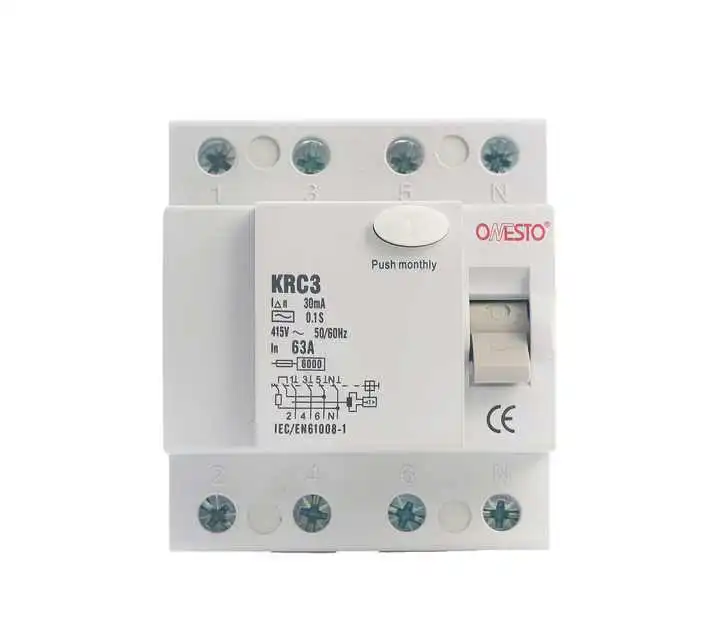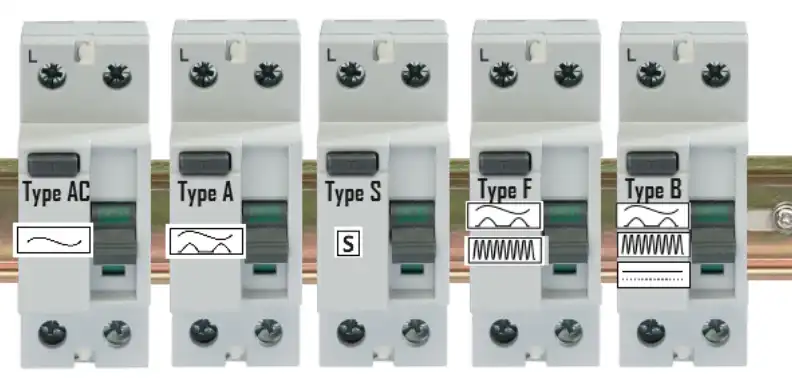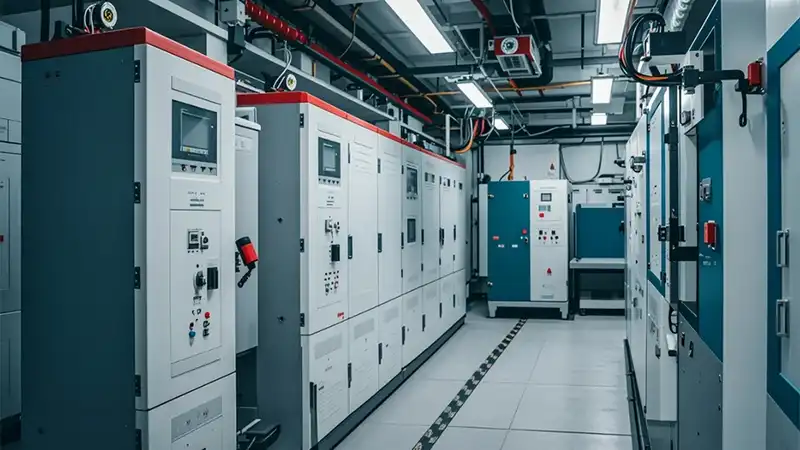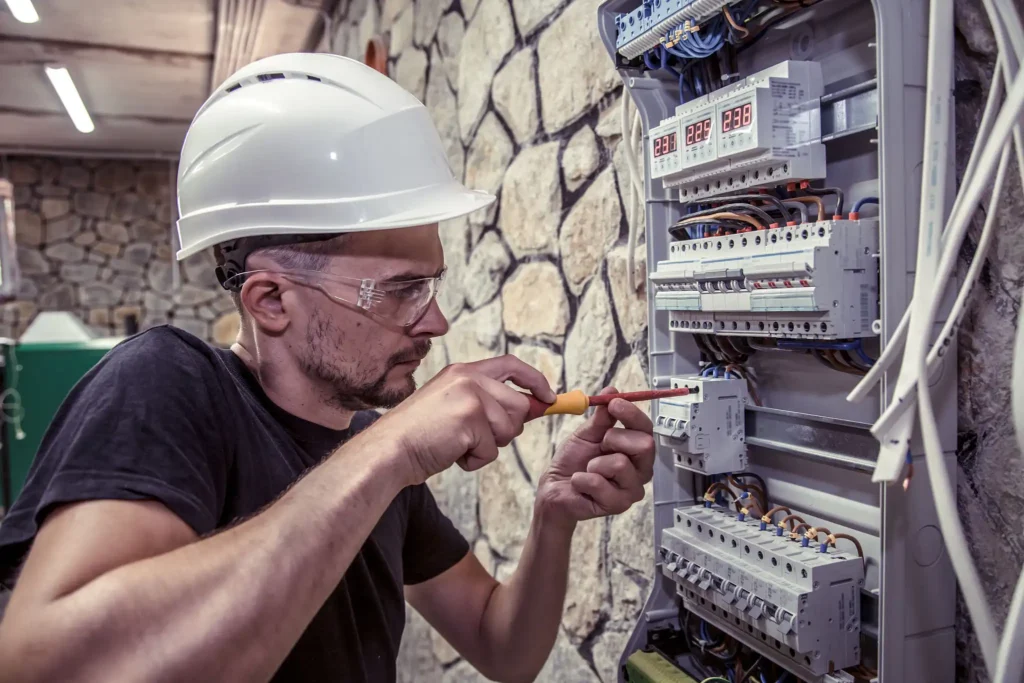Electrical leaks or malfunctions may cause electrical fires, electric shocks, and even pose a threat to life. To avoid all these dangers, leakage protection devices and residual current circuit breakers are now basic tools in electrical protection equipment. This article will study the interrelationship, mechanism of action, and correlation between residual current protection and residual current circuit breakers in a series of applications.
What is residual current circuit breaker
Residual current circuit breaker (RCD) is an electrical safety device used to monitor the current difference in a circuit in real time. When leakage (such as human electric shock or damage to circuit insulation) is detected, it can cut off the power supply within milliseconds, avoiding electric shock accidents or electrical fires.
The working principle of RCD
RCD compares the balance between the “input current” and “return current” in the circuit. Under normal circumstances, the two are equal; If a leakage occurs (such as current passing through the human body and equipment casing to the ground), and the current difference is greater than the set threshold (usually 30mA), the RCD will immediately and reflexively cut off the power supply.
Common types of RCD
Sensitivity: high sensitivity (≤ 30mA), medium sensitivity (>30mA), low sensitivity (around 100mA)
According to action characteristics: AC type (AC only), A type (AC/DC), B type (special equipment)
According to installation method: fixed, portable
Basic concepts of leakage protection
The occurrence of leakage phenomenon
Due to aging of the circuit, insulation failure of equipment, or human error, current may form a leakage circuit through unexpected paths (such as damp walls or metal casings), resulting in energy loss and safety hazards.
The Importance of Leakage Protection
Prevent electric shock injuries (30mA current can be fatal)
Reduce the risk of electrical fires (electric leakage heating can easily ignite combustibles)
Ensure equipment lifespan (component damage caused by abnormal current)
The Relationship between Residual Current Circuit Breaker and Leakage Protection
Common goal: Ensure electrical safety
Both aim to eliminate the risk of leakage, but RCD is the core technology equipment for implementing leakage protection.
The role of RCD in leakage protection
Real time monitoring of current difference
Automatically cut off the faulty circuit
Working in conjunction with overload protector (MCB)
The following is a comparison table of residual current circuit breakers (RCD) and leakage protection:
| Item | Residual Current Circuit Breaker (RCD) | Leakage Protection |
|---|---|---|
| Function | Detects leakage current in the circuit and cuts off the power when the leakage current exceeds a set value. | Protects individuals from electric shock caused by leakage current and prevents fire hazards. |
| Working Principle | Compares the incoming and outgoing currents; if there is a difference beyond the set value, it cuts off the power. | Mainly relies on the RCD's principle to detect leakage and cut off the power. |
| Protection Target | Primarily prevents electrical equipment from failure or damage caused by leakage. | Primarily protects individuals from electric shock caused by leakage. |
| Application Range | Used in power systems, especially in circuits that require leakage protection. | Used in electrical devices, residential, and public buildings for leakage protection. |
| Main Equipment | Residual Current Circuit Breaker (RCD) | Leakage protection provided by the RCD's functionality. |
| Response Speed | Fast, can cut off power immediately when leakage occurs. | Depends on the RCD’s response speed. |
| Trigger Condition | Current imbalance, leakage exceeds a set threshold. | Protection triggers when current leaks to the ground. |
Classification of RCD
Non regulated and regulated types
Non regulated type: fixed threshold (such as 30mA)
Adjustable type: sensitivity can be manually adjusted (commonly used in industrial scenarios)
Full current type and single-phase type
Full current type: suitable for three-phase circuits (detecting the sum of three-phase current vectors)
Single phase type: commonly used in households, monitoring the current difference between the live and neutral wires
Characteristic classification
AC type: only responds to AC leakage (such as lighting circuits)
Type A: Compatible with AC/pulsating DC (such as frequency conversion equipment)
Type B: Used for special scenarios such as medical equipment and photovoltaic systems
The working principle of RCD: how to detect leakage?
Current imbalance detection
Real time calculation of the difference between current input and output through the built-in zero sequence current transformer.
When the difference value exceeds the set value (such as 30mA), the electromagnetic release triggers power-off.
The impact of leakage circuit
Human electric shock: Current flows through the human body → the earth → the neutral point of the transformer to form a circuit
Equipment leakage: Current flows through the casing → PE line → grounding electrode to form a circuit
Application scenarios of RCD
RCD Application in Home Electrical Systems
In home circuits, RCD is usually installed at the main switch or branch switch position of the distribution box to protect the following scenarios:
Socket circuit: To prevent electric shock caused by electrical leakage (such as washing machines, water heaters).
Wet areas: High sensitivity (≤ 30mA) RCD (IEC 60364 standard) is mandatory to be installed in bathrooms, kitchens, and other places.
Leakage protection in commerce and industry
Three phase equipment: Use full current RCD (to detect the sum of three-phase current vectors).
Adjustable RCD: Adjust sensitivity according to production line load (e.g. 50mA-1A).
Data center: Adopting B-type RCD to prevent DC component interference (such as UPS system).
Installation and maintenance of RCD
Installation precautions
Grounding requirement: It is necessary to ensure that the PE line (protective grounding) is reliably connected, otherwise the RCD cannot detect the leakage circuit.
Avoid mixing: The neutral wires of different circuits must not be shared, otherwise it may cause misoperation.
Lightning protection: In areas prone to lightning, RCD needs to be installed in conjunction with SPD (Surge Protective Device).
Common faults and repairs
| Fault Phenomenon | Possible Cause | Solution |
|---|---|---|
| Cannot close the circuit | Continuous leakage in the circuit | Inspect equipment insulation or disconnect faulty load |
| False tripping | Electromagnetic interference (e.g., nearby welding machine) | Replace with an RCD resistant to interference |
| Test button failure | Mechanical parts stuck | Replace the RCD (no self-repair allowed) |
Advantages and limitations of RCD
Advantage: The core of security protection
Quick response: When there is a 30mA leakage, the power-off time is ≤ 0.1 seconds (the power is cut off before the human body senses it).
Strong compatibility: Can be linked with MCB (miniature circuit breaker) and RCBO (integrated protector).
Economic efficiency: A single RCD can protect multiple devices and reduce overall safety costs.
Limitations: Not a universal protection
Not resistant to overload/short circuit: It needs to be used in conjunction with MCB (if RCD is used alone, overload may cause fire).
Unable to detect neutral wire breakage: If the neutral wire is disconnected, RCD may not be able to detect phase to ground leakage.
Dependent grounding system: The best performance is achieved in TT grounding system, but IT system requires special configuration.
How to choose a suitable RCD?
Select based on electrical load
Home users: 30mA high sensitivity RCD (priority type A).
Industrial motor: 100-300mA adjustable RCD (to avoid accidental triggering of starting current).
Photovoltaic system: B-type RCD (capable of detecting smooth DC leakage).
You can choose ONESTO’s residual current circuit breakers, which have ultra-high quality and multiple types of options for customized product services. Provide a perfect electrical solution. Click to learn more products
FAQ









